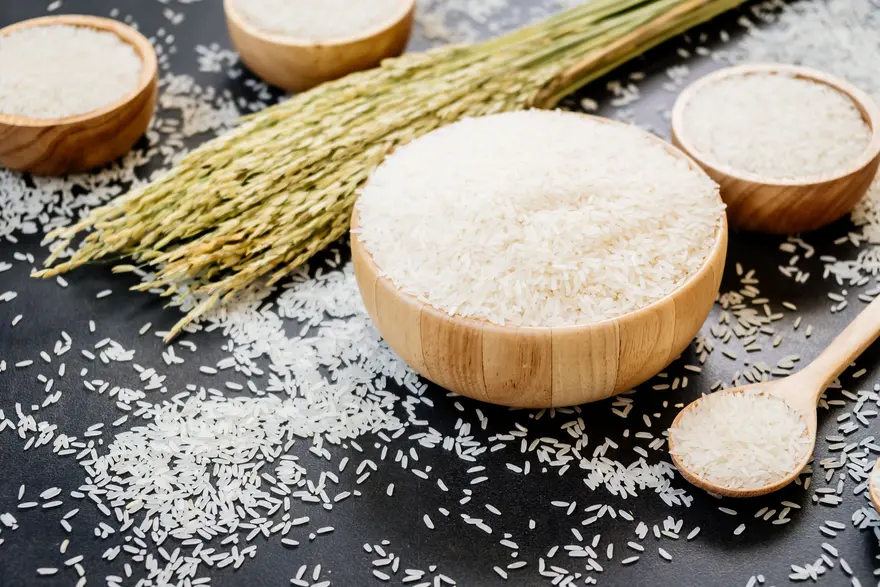Preventive Healthcare
Confronting the Challenge of Antimicrobial Resistance: Understand the Process, Risks, and Treatment Methods

Table of Contents
- What is Antimicrobial Resistance?
- What are Microbes?
- What are examples of antimicrobials?
- What illnesses do microbes cause? What illnesses do antimicrobials treat?
- How Does Antimicrobial Resistance Happen?
- What Does the Mutated Gene or Resistant Germ Do to the Antimicrobials?
- Is Antimicrobial Resistance the Same as Antibiotic Resistance?
- When was Antimicrobial Resistance Discovered?
- How Common is Antimicrobial Resistance?
- Who is Affected by Antimicrobial Resistance?
- Is Antimicrobial Resistance Contagious?
- What Increases the Risk of Antimicrobial Resistance?
- How is Antimicrobial Resistance Diagnosed? What Tests Are Done?
- How is Antimicrobial Resistance Treated?
- How can Antimicrobial Resistance be Prevented?
- What Happens If Antimicrobial Resistance Gets Worse?
- Conclusion
In a world where microbes constantly evolve, the challenge of antimicrobial resistance looms large. The antibiotic drugs once hailed as medical marvels are losing their edge. As bacteria, viruses, and parasites adapt to medications, risks increase, compromising conventional treatments. Therefore, with this read, you will understand antibiotics and antibiotic resistance, grasping the imminent risks to public health and innovative treatment methods. So, read on!
What is Antimicrobial Resistance?
Antimicrobial Resistance (AMR) is the ability of microbes to withstand the effects of medications designed to eliminate them. There are various factors that contribute to AMR resistance, rendering once-effective treatments ineffective. This makes infections more difficult to treat and increases the risk of diseases spreading, even ones that used to be easy to manage.
What are Microbes?
Microbes, short for microorganisms, are tiny, living organisms that you cannot see with your naked eye. They include bacteria, viruses, fungi, and protozoa, found everywhere on the Earth. These organisms play a vital role in ecosystems and help with nutrient cycling and decomposition. Some microbes are beneficial, such as those used in fermentation, while others can cause diseases in your body.
What are examples of antimicrobials?
Antimicrobials include antibiotics (e.g., penicillin), antivirals (e.g., acyclovir), antifungals (e.g., fluconazole), and antiparasitics (e.g., metronidazole). These substances help fight off microbial infections in your body by stopping their growth or destroying the microbes completely.
What illnesses do microbes cause? What illnesses do antimicrobials treat?
Microbes are responsible for a spectrum of illnesses, spanning bacterial infections like strep throat, viral infections such as influenza, fungal conditions like ringworm, and parasitic diseases like malaria.
Antimicrobials, comprising antibiotics, antivirals, antifungals, and antiparasitics, serve as important tools in treating these infections by targeting and eliminating the specific microbes causing the diseases in your body. They prove effective against bacterial pneumonia, urinary tract infections, viral influenza, and fungal skin infections, among others. However, you have to be careful about how you use antimicrobials. After all, balancing the judicious use of antimicrobials is essential for maintaining their effectiveness and addressing the evolving landscape of microbial infections.
How Does Antimicrobial Resistance Happen?
AMR resistance develops when you misuse or overuse antimicrobial medications. Exposure to insufficient doses or not completing a prescribed course can allow resilient microbes to survive and adapt in your body. Moreover, the use of antimicrobials in agriculture and inadequate infection prevention practices contribute to resistance. The surviving microbes evolve, potentially causing infections that are harder to treat.
What Does the Mutated Gene or Resistant Germ Do to the Antimicrobials?
The mutated gene or resistant germ alters the target of antimicrobials, making the microbes less susceptible to the effects of your medications. This genetic modification often prevents the antimicrobial from effectively inhibiting the growth or killing the microorganism in your body, leading to reduced treatment efficacy.
Is Antimicrobial Resistance the Same as Antibiotic Resistance?
Antibiotic resistance is a subset of AMR resistance. Antimicrobial resistance includes resistance to antibiotics, antivirals, antifungals, and antiparasitic drugs.
When was Antimicrobial Resistance Discovered?
Antimicrobial resistance has been recognised since the early days of antibiotic use. The discovery of penicillin by Alexander Fleming in 1928 marked the beginning of antimicrobial therapy, and concerns about resistance emerged shortly thereafter in the 1940s.
How Common is Antimicrobial Resistance?
Antimicrobial resistance poses a pressing global public health concern. As indicated by a report published in The Lancet, it resulted in the deaths of at least 1.27 million individuals globally and was linked to nearly 5 million fatalities in 2019. The World Health Organization sees it as a major threat, emphasising the urgent need for global cooperation to tackle this challenge and ensure the continued effectiveness of antimicrobial treatments.
Who is Affected by Antimicrobial Resistance?
AMR resistance affects people of all ages and backgrounds globally. It can pose a threat if you have a weak immune system and frequently take antimicrobial drugs. It can also affect people requiring medical treatments, particularly those undergoing surgeries, cancer treatments, or organ transplants.
Is Antimicrobial Resistance Contagious?
No, antimicrobial resistance itself is not contagious. However, resistant infections caused by bacteria, viruses, fungi, or parasites can spread from person to person if we do not take proper preventive measures.
What Increases the Risk of Antimicrobial Resistance?
Here are some of the risks of antimicrobial resistance:
- Overuse and misuse of antibiotics: When you take antibiotics for viral infections, which these medications cannot treat, or fail to complete prescribed courses, they create an environment that helps the resistant strains to grow. For instance, sometimes doctors prescribe antibiotics when a patient has a common cold, which is caused due to a viral infection. This in turn contributes to AMR resistance
- Agricultural Practices: Agricultural activities play a key role in transmitting antimicrobial resistance. When we use antimicrobials in livestock, either for growth promotion or disease prevention, we actually introduce these drugs into our food chain. Consuming products derived from animals treated with antimicrobials exposes you to resistant microbes, contributing to the spread of resistance beyond healthcare settings.
- Inadequate Infection Prevention in Healthcare: In healthcare settings, lapses in infection prevention and control measures significantly elevate the risk of spreading resistant infections. Not following proper hygiene practices, healthcare professionals and patients included, creates an environment where resistant microbes can proliferate, posing a threat to patients undergoing medical treatments.
- Incomplete or Suboptimal Dosages: Incomplete or suboptimal dosages of antimicrobials further exacerbate the risk. Failure to complete prescribed antibiotic courses allows surviving microbes to adapt and develop resistance mechanisms.
How is Antimicrobial Resistance Diagnosed? What Tests Are Done?
To diagnose antimicrobial resistance, doctors may prescribe conducting microbial culture and sensitivity tests such as blood culture, urine culture, sputum culture, etc. These tests involve isolating the infectious agent from your body and testing its vulnerability to various antimicrobials. Molecular techniques, like Polymerase Chain Reaction (PCR), can also identify specific resistance genes in the microbes.
How is Antimicrobial Resistance Treated?
Treating antimicrobial resistance involves tailored approaches based on your specific infection. Doctors use alternative antimicrobials, higher doses, or combinations of antibiotics to combat resistant strains in your body. Non-medication treatments such as probiotics and phytomedicine can also be experimented with.
How can Antimicrobial Resistance be Prevented?
Here is how you can prevent antimicrobial resistance:
- Take antibiotics only when prescribed, completing the entire course. You should avoid self-medication and unnecessary antibiotic intake to reduce the risk of resistance development.
- Practice rigorous hygiene to prevent the spread of infections and minimise the need for antimicrobial interventions.
- Advocate against the overuse of antimicrobials in livestock for growth promotion. Support sustainable agricultural practices to prevent the transmission of resistant microbes through the food chain.
- Get vaccinated for common diseases caused by microbes such as Tuberculosis, MMR, diphtheria and Polio among others. This reduces the demand for antimicrobial treatment and lowers the overall risk of resistance.
- Educate yourself and others on responsible antimicrobial use. Encourage sticking to the doctors' advice and support proper antimicrobial practices.
- You should always support research and innovation for new antimicrobials and alternative therapies.
What Happens If Antimicrobial Resistance Gets Worse?
If antimicrobial resistance worsens, treating common infections could become challenging or even impossible. Moreover, routine medical procedures, like surgeries and cancer treatments, may carry higher risks because of the higher chances of getting infected with resistant bacteria. The mortality rate for previously manageable illnesses might rise, posing a significant threat to global public health. Eventually, the cost of treatment and hospital stays would increase to deal with more resistant infections.
Conclusion
There is a need to take urgent action to address the growing problem of antimicrobial resistance through a collective commitment to responsible and sustainable antibiotic consumption practices. By prioritising these measures, we can ensure a healthier future, preserving the effectiveness of antimicrobials for generations to come. If you are looking to get a blood, urine, or stool culture test done to identify the presence of resistant microbes, reach out to Metropolis Labs! We aim to provide you with high-quality and affordable diagnostic services preferred by the leading doctors and hospitals across India. Book a culture and sensitivity test from your nearest Metropolis Lab today! today!





































